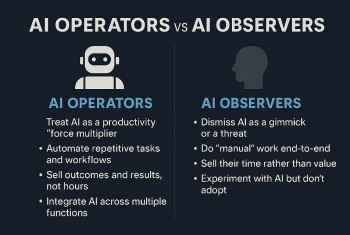What Is Stuxnet? The Cyber Weapon That Sabotaged Iran’s Nuclear Ambitions
 Nuclear Sites in Iran: Latest Discoveries, Strategic Threats & Military Options Nuclear Sites in Iran: Latest Discoveries, Strategic Threats & Military Options |
 Where Did the US Bomb in Iran? Inside the Three Nuclear Sites Triangle Attack Where Did the US Bomb in Iran? Inside the Three Nuclear Sites Triangle Attack |
 |
| Stuxnet did not confine itself to Iran. It spread to other countries |
What Is Stuxnet? A First in Cyber-Physical Warfare
Stuxnet is widely regarded as the world’s first true cyber-physical weapon: a highly sophisticated computer worm built not to steal data or demand ransom, but to infiltrate industrial systems and destroy physical infrastructure. Discovered in June 2010, Stuxnet targeted SCADA-controlled PLCs (Programmable Logic Controllers), with the specific goal of disabling Iran’s uranium centrifuges at the Natanz nuclear facility.
Unlike conventional malware, Stuxnet was designed with surgical precision. It was created to compromise specific configurations of Siemens Step7 systems and manipulate the hardware they controlled. This marked a revolutionary shift in the history of cyberwarfare: a software-based weapon that could cause real-world kinetic effects without human intervention.
Origins: Operation Olympic Games and Nation-State Sponsorship
Stuxnet’s complexity and scope made it immediately clear that it wasn’t the work of lone hackers or even typical cybercriminal groups. Multiple intelligence and cybersecurity agencies concluded that the malware was a product of a joint operation between the United States and Israel, under the codename "Operation Olympic Games."
This covert mission was aimed at slowing down Iran’s nuclear capabilities without triggering a full-scale military conflict. Initiated under the Bush administration and expanded under Obama, it represented a strategic shift from traditional warfare to digital sabotage.
Anatomy of a Digital Weapon
Technical Features
Despite its modest size of approximately 500KB, Stuxnet was a complex, modular program featuring:
-
Four zero-day vulnerabilities, a rarity in malware.
-
Two stolen digital certificates from Realtek and JMicron, which allowed it to appear as trusted software.
-
A rootkit that concealed its operations within infected systems.
-
A payload specifically designed to manipulate Siemens PLCs.
Industrial Focus
Stuxnet targeted systems using Siemens Step7 software, which programmed PLCs controlling high-speed centrifuges. These industrial components were key to Iran's uranium enrichment process. The malware required deep knowledge of both Windows internals and industrial automation systems, suggesting an elite team of programmers and engineers.
The Target: How Stuxnet Mapped Natanz
Stuxnet did not attack indiscriminately. It contained logic to determine whether the infected system matched the highly specific setup used at the Natanz facility:
-
At least 33 frequency converter drives.
-
Operation within a frequency range of 807 Hz to 1210 Hz.
-
Usage of the Siemens Step7 control software.
Only if all these conditions were met did Stuxnet unleash its destructive payload. If not, the worm remained dormant, silently spreading to other machines as a carrier.
How CIA, Mossad Used a Computer Virus to Dismantle Iran's Nuclear ProgramIn one of the most covert and groundbreaking cyber operations in history, the CIA and Israel's Mossad joined forces to launch a digital strike against Iran’s nuclear infrastructure—without ever stepping foot on Iranian soil. The weapon? Stuxnet, a highly sophisticated computer worm that would change the face of modern espionage and warfare. The target was Iran’s Natanz nuclear facility, a key site in the country’s uranium enrichment program. Physically secured and air-gapped from the internet, Natanz was considered nearly impenetrable. But U.S. and Israeli intelligence agencies had another plan: insert malicious code capable of infiltrating industrial control systems and subtly sabotaging machinery. Stuxnet was designed to seek out Siemens Step7 software used to operate centrifuges enriching uranium. Once embedded, it manipulated rotor speeds—sometimes too fast, sometimes too slow—causing gradual physical degradation. Even more insidiously, it sent fake signals to monitoring systems, fooling Iranian engineers into thinking everything was functioning normally. The operation, reportedly codenamed Operation Olympic Games, began during the Bush administration and was accelerated under President Obama. By the time Stuxnet was discovered in 2010, it had destroyed roughly 1,000 centrifuges and set Iran’s nuclear timeline back by years—all without a bomb or bullet. Stuxnet proved that a line of code could achieve what traditional sabotage could not. It demonstrated the power of cyberwarfare in neutralizing threats without kinetic force. For intelligence communities worldwide, it was a proof-of-concept; for Iran, it was a devastating and humbling loss. |
Infection Vector: Bypassing Air Gaps via USB
Natanz was considered secure due to its air-gapped nature—completely isolated from the internet. Stuxnet overcame this by propagating via infected USB drives. It exploited a vulnerability in how Windows handled LNK shortcut files, allowing execution of code as soon as a folder was opened.
The malware patiently waited until it reached a system meeting its target criteria. Eventually, a technician unknowingly introduced an infected device into Natanz, triggering the activation of the payload.
Payload Execution: Silent Manipulation of Centrifuges
Stuxnet executed a form of invisible sabotage. Once embedded in the PLC, it:
-
Recorded normal operating behavior of the centrifuges.
-
Replayed this data to monitoring systems, deceiving engineers.
-
Manipulated rotor speeds—briefly accelerating or decelerating—to induce mechanical stress and eventual failure.
This attack caused severe damage while hiding its presence. Engineers at Natanz saw normal readings, unaware that their centrifuges were degrading with every cycle.
Impact on Iran’s Nuclear Program
Estimates suggest Stuxnet destroyed over 1,000 centrifuges at Natanz, delaying Iran's nuclear timeline by several years. Iran struggled to identify the cause, believing initially it was mechanical error or poor engineering.
By the time cybersecurity experts exposed the malware, the damage was done. It took Iran nearly four years to fully understand and respond to the attack.
Global and Strategic Fallout
NATO and Military Doctrine
Stuxnet forced organizations like NATO to rethink cyber defense. Cyberattacks were officially recognized as acts of war, warranting military-level responses.
Proliferation of Cyber Weapons
Stuxnet inspired a new generation of state-sponsored cyber weapons, including Duqu, Flame, and Triton. Nations like Russia, China, and Iran invested heavily in offensive cyber capabilities.
Critical Infrastructure Awareness
The attack highlighted vulnerabilities in industrial systems and air-gapped environments, prompting global reassessments of ICS (Industrial Control System) security.
Security Lessons for the Digital Age
-
Air-gapped systems are not invulnerable. Stuxnet proved they can be breached with patience and planning.
-
Zero-day vulnerabilities are strategic weapons. Acquiring and using them can yield significant geopolitical advantages.
-
Attribution is murky. Stuxnet remains unattributed officially, complicating diplomatic responses.
-
Digital code can cause physical damage. The distinction between cyber and kinetic warfare is now blurred.
-
Cybersecurity is now national security. Nations must invest in robust cyber defenses across all sectors.
FAQs
Q: What is Stuxnet?
A: Stuxnet is a cyber weapon designed to target industrial control systems and physically damage critical infrastructure. It was the first malware known to cause real-world harm.
Q: Who created Stuxnet?
A: While not officially confirmed, it is widely believed to be a joint project by the United States and Israel under Operation Olympic Games.
Q: How did Stuxnet spread?
A: It propagated via infected USB drives and exploited zero-day vulnerabilities to infect Windows systems and Siemens PLCs.
Q: Is Stuxnet still active?
A: No. The original threat was neutralized, but its techniques and code have influenced many subsequent malware strains.
Q: Why is Stuxnet significant?
A: It changed global perceptions of cyberwarfare, proving that digital attacks can have strategic and physical consequences.
Conclusion: Code as a Weapon—and a Warning
Stuxnet was more than a sophisticated virus; it was a declaration of a new era in warfare. It showed that code alone could destroy machines, derail national agendas, and redefine international conflict.
For Iran, it was a costly lesson. For the world, it was a wake-up call. As we move deeper into the digital age, Stuxnet stands as a stark reminder: in modern conflict, the most powerful weapons may be invisible, embedded not in steel or firepower, but in strings of code.
 Mystery of the New Jersey Drone Flights: No Iranian Ship, No Chinese involvement, and No UFO Mystery of the New Jersey Drone Flights: No Iranian Ship, No Chinese involvement, and No UFO Recent mysterious drone sightings over New Jersey have sparked speculation about foreign adversaries and extraterrestrials. Officials, however, have found no evidence supporting such claims, urging ... |
 Who is Iranian Singer Parastoo Ahmadi: Bio, Education, Career, and Future Who is Iranian Singer Parastoo Ahmadi: Bio, Education, Career, and Future Parastoo Ahmadi, a 27-year-old Iranian singer, was released from custody after her arrest for performing without a hijab during an online concert. Check out her ... |
 Who was Cecilia Sala? Italian Journalist Freed After Three Weeks in Iranian Detention Who was Cecilia Sala? Italian Journalist Freed After Three Weeks in Iranian Detention Cecilia Sala, an Italian journalist detained in Iran for three weeks |
 Possible U.S. Strike on Iran: What It Means and Where It Could Lead (Update) Possible U.S. Strike on Iran: What It Means and Where It Could Lead (Update) President Trump weighs a U.S. strike on Iran amid mounting Israeli-Iranian conflict. Russia and China warn of global fallout. Civilian evacuations, cyberattacks, and military mobilizations ... |
 Inside Iran’s Nuclear Fortress Fordow: The Truth About the Mountain-Deep Centrifuge Halls Inside Iran’s Nuclear Fortress Fordow: The Truth About the Mountain-Deep Centrifuge Halls Nestled deep in Iran’s rugged Zagros Mountains, the Fordow enrichment site stands as one of the most heavily fortified and secretive nuclear facilities in the ... |
























